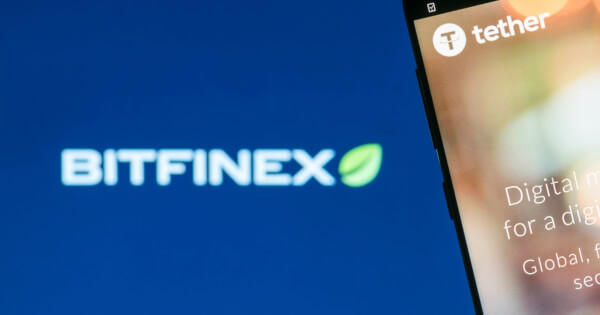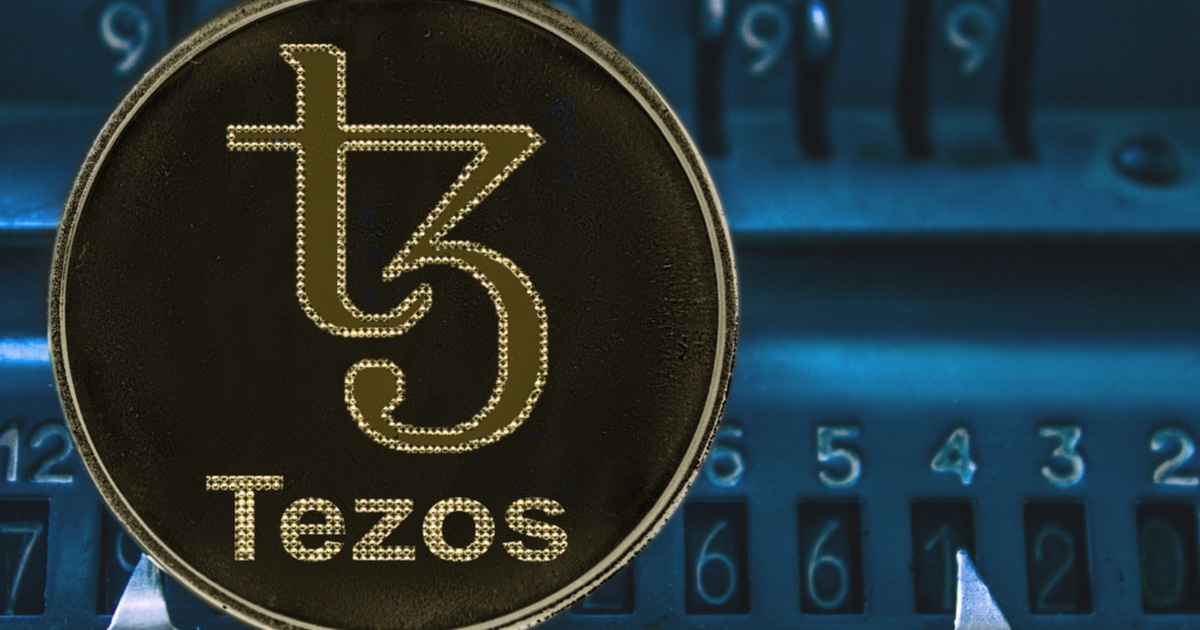In a recent spate of eight spot Bitcoin ETF applications, no applicant designated a national bank as a custodian. Previously, the country’s most venerated financial institutions expressed an intention to custody crypto-assets. Why, then, was no national bank designated? One driving factor may be a controversial SEC bulletin regarding the treatment of crypto-assets by banks, financial institutions or others, which directs banks to hold crypto custodial assets on their balance sheet and creates corresponding capital implications.
Below, we address (i) the SEC’s guidance; (ii) its negative effects as highlighted by SEC Commissioner Peirce, the Federal Reserve and members of Congress; (iii) the inconsistency between the SEC and the Basel Committee, the primary global standard setter for prudential bank regulation; (iv) the vehicle through which the SEC chose to act (i.e., a bulletin versus public rulemaking); and (v) crucial implications for industry actors and customers moving forward.
Background: the SEC’s guidance
Staff Accounting Bulletin No. 121 (SAB 121), issued by the staff of the Office of the Chief Accountant of the SEC on March 31, 2022, with an effective date of April 11, 2022, provides “interpretive guidance” for SEC reporting entities1 that hold crypto-assets2 in custody on behalf of clients to record that risk on-balance sheet.
This represents a significant departure from decades of generally accepted off-balance sheet accounting treatment for other custodied assets and raises questions about the feasibility of U.S. banking organizations scaling up their crypto-asset businesses.
Why the departure? According to SAB 121, safeguarding crypto-assets held on platform involves unique risks and uncertainties not present in arrangements to safeguard non crypto-assets. It advises that due to increased technological, legal and regulatory risks associated with safeguarding crypto-assets, including an “increased risk of financial loss,” an entity should record its obligations to safeguard crypto-assets for customers as a liability on its balance sheet along with a corresponding asset, measured at the fair value of the related crypto-assets.
The largest U.S. bank holding companies that are SEC registrants and their custodial bank subsidiaries have already noted in their SEC filings that they have implemented SAB 121 and that it currently has a de minimis impact on their financial statements and capital requirements. However, this may likely be because they are not offering crypto-asset custody at scale. The result of U.S. banking organizations offering crypto custody services at scale under this directive would result in knock-on effects in the prudential regulatory framework that could give rise to significant capital and liquidity costs3 and, as such, make it prohibitively expensive to provide these services.
It is not surprising, therefore, that the bulletin has generated substantial controversy among public officials as well as private actors.
Reactions from Congress, SEC Commissioner Peirce, the Federal Reserve and industry
On March 31, 2022, SEC Commissioner Hester Peirce issued a response to SAB 121, questioning whether the use of a staff accounting bulletin was the appropriate route through which to make an accounting change and to communicate that change to the public. She also noted that SAB 121 is unusual among staff accounting bulletins in that it provides interpretive guidance “for a very specific, very limited number of public companies” and that it is also unusual in the detailed description of disclosure that the staff is expecting to receive.
Subsequent to the issuance of SAB 121, a number of associations and elected government officials also raised objections and called for greater clarity regarding its impact on financial institutions, a comprehensive notice-and-comment rulemaking process, amendments and clarifications, and a withdrawal of the bulletin. A summary of their reactions is as follows:
- On March 2, 2023, Chairman of the House Financial Services Committee Patrick McHenry (R-NC) and Senator Cynthia Lummis (R-WY) from the Senate Banking Committee sent a letter to the Federal Reserve, the Federal Deposit Insurance Corporation, the Office of the Comptroller of the Currency and the National Credit Union Administration seeking clarification on guidance for the accounting treatment of crypto-assets under SAB 121. The letter questioned the “massive capital charge” that requiring banks and other financial institutions to place digital assets on their balance sheets would trigger, preventing “prudentially regulated entities from engaging in digital asset custody” when “[t]o the contrary, we should be encouraging prudentially regulated financial institutions like banks and credit unions, to provide digital asset services precisely because they are subject to the highest standards of capital, liquidity, recovery and resolution, custody, cyber-security, and risk management.”
- On March 30, 2023, Congressman Michael Flood (R-NE) sent a letter to SEC Chairman Gary Gensler requesting that SAB 121 be withdrawn as written and stating that SAB 121 “represents a significant departure from existing accounting treatment of assets held under custody and could preclude banks from custodying digital assets.” Citing the Office of the Comptroller of the Currency’s July 2020 Interpretive Letter #1170, in which the OCC concluded that a national bank may provide crypto-asset custody services on behalf of customers, including by holding the unique cryptographic keys associated with crypto-assets, Congressman Flood stated that the SEC’s requirement to now hold these assets on-balance sheet “flies in the face of bank custody practices.”
- On June 23, 2022, the American Bankers Association, Bank Policy Institute and the Securities Industry and Financial Markets Association (the Trades) sent a letter to the Treasury Department, OCC, FDIC and Federal Reserve stating that applying SAB 121’s on-balance sheet guidance “would result in prudential knock-on effects that would make it economically impractical for banking organizations to provide crypto-asset safeguarding activities” and that such a result should be avoided as “the presence of banking organizations in crypto-asset markets ultimately would benefit investors, financial markets and the broader public.”
The Trades went on to state that the technological, legal and regulatory risks identified in SAB 121 are “substantially mitigated by banking organizations and their federal supervisors, given existing regulation, supervision, legal precedent and related industry practices.” Thus, the Trades believes that SEC staff should clarify that SAB 121 balance requirements do not apply to regulated banking organizations that safeguard crypto-assets.
- In testimony before the Senate Banking Committee in June 2022, Federal Reserve Board Chair Powell said that “custody assets are off-balance sheet, have always been.” Traditionally, assets held in custody are held off-balance sheet and are treated as neither liabilities nor assets.
- During an April 18, 2023 House Financial Services Committee hearing, Representative Andy Barr (R-KY) questioned SEC Chairman Gensler on SAB 121 and stated concerns about the consequences of SAB 121 on banks because of their “capital, liquidity and other prudential requirements that non-bank custodians do not have, meaning banks cannot offer digital asset custody services at scale without significant implications.” Barr emphasized that if banks cannot offer crypto-asset custody services at scale, they will not offer crypto-asset custody services, “diminishing American competitiveness and compromising investor protection.”
SAB 121 is at odds with rules issued by the Basel Committee on Banking Supervision
Apropos of Representative Barr’s comment on American competitiveness, it is noteworthy that the Basel Committee on Banking Supervision (Committee) has already adopted rules on the capital treatment of crypto-asset exposure.4
The Committee had contemplated a version of its rule similar to SAB 121, which would have classified crypto custodial assets as “exposures.”5 However, industry groups universally objected to the inclusion of this provision because it would be a significant departure from the traditional accounting treatment of custodial assets. As a result, the Committee removed the provision and subsequently issued its final crypto capital rule, SCO60: Cryptoasset exposures, which generally exempts crypto custodial assets from heightened capital requirements applicable to crypto exposures under the rule.6
A number of non-U.S. jurisdictions have already begun integrating these rules into their prudential regulatory scheme as part of Basel III’s endgame implementation.7 U.S. bank regulators have also affirmed their commitment to Basel III standards.8 Should U.S. bank regulators integrate SCO60 into the U.S. regulatory capital regime, it would create substantial uncertainty regarding the capital treatment of crypto custodial assets for U.S. bank custodians that are SEC registrants by putting the adoption of SCO60 at odds with SAB 121.
Why a staff bulletin and not public rulemaking?
Commissioner Peirce questioned why a staff accounting bulletin was used as opposed to a “more deliberate approach to changing rules – one that involves consulting with affected parties,” which could include Commission rulemaking with public notice and comment, Financial Accounting Standards Board standard setting or engaging through the Division of Corporation’s finance’s filing review program in consultation with the Office of Chief Accountant.
At the same time, in our experience, it is not uncommon for agency staff to issue guidance through bulletins, in lieu of promulgating rulemaking, depending on the greater speed and efficiency offered by avoiding the rulemaking process. On its face, SAB 121 expressly states that “interpretations in this SAB express views of the staff” and that statements in staff accounting bulletins are “not rules or interpretations of the Commission, nor are they published as bearing the Commission’s official approval.” However, despite using the words “interpretive guidance,” the language presented suggests that it is not optional by including, among other things, provisions for a transition period and dates by which to apply the guidance. In any event, while a bulletin afforded the SEC advantages such as speed, its choice to avoid the rulemaking process comes with a disadvantage. Namely, a public notice-and-comment process, which was not used here, could have yielded deliberations ultimately persuading the SEC to harmonize its approach with that of prudential bank regulators and more meaningfully weigh the risks and benefits of the new accounting treatment to customers and investors. Further, a market participant who could choose to challenge the agency guidance would be able to trigger mere Skidmore deference given SAB 121’s status as guidance, as opposed to Chevron deference generally given to formal rulemaking.9
Implications for U.S. competition, customers and banks
If SAB 121 effectively prevents prudentially regulated entities such as U.S. banks from providing custodial services for crypto-assets at scale, then this potentially weakens consumer protection and is not in line with the SEC’s fundamental mission to protect investors. If anything, recent events in the crypto space have further highlighted the need for more trusted regulated custodians to provide enhanced investor protections.
SAB 121 may also jeopardize the competitiveness of U.S. bank crypto-asset custodians. Banks overseas, including Japan’s Nomura and Singapore’s DBS, have been actively providing institutional-grade crypto-asset custody for a number of years now. They can offer crypto custodial services without facing balance sheet and capital implications and this trend may likely be memorialized around the globe upon adoption, if any, of SCO60. As long as SAB 121 exists, U.S. banks will not be able to compete with overseas banks in custodying crypto-assets.
With the proliferation of crypto solutions and the advances being made in the regulatory framework globally, we believe that U.S. financial institutions should be allowed to offer crypto-asset custody at scale without significant balance sheet implications in a manner that is consistent with the traditional accounting treatment of custodial assets and the rules established by the Basel Committee on Banking Supervision.
- SAB 121 states that it is applicable to “entities that file reports pursuant to Sections 13(a) or 15(d) of the Securities Exchange Act of 1934 (Exchange Act) and entities that have submitted or filed a registration statement under the Securities Act of 1933 (Securities Act) or the Exchange Act that is not yet effective. The SAB is also applicable to entities submitting or filing an offering statement or post-qualification amendment thereto under Regulation A, entities subject to the periodic and the current reporting requirements of Regulation A, and private operating companies whose financial statements are included in filings with the SEC in connection with a business combination involving a shell company, including a special purpose acquisition company.” See SEC Staff Accounting Bulletin No. 121 (April 11, 2022).
- The term crypto-asset is broadly defined in SAB 121 as “a digital asset that is issued and/or transferred using distributed ledger or blockchain technology using cryptographic techniques.” See SEC Staff Accounting Bulletin No. 121 (April 11, 2022).
- The American Bankers Association, Bank Policy Institute and the Securities Industry and Financial Markets Association’s June 23, 2022 letter to the Department of the Treasury, the Federal Reserve System, the Federal Deposit Insurance Corporation, and the Office of the Comptroller of the Currency regarding SAB 121, lists some of the significant capital, liquidity, and other costs as including categorization of banks under the tailoring rules; leverage and risk-based capital; capital stress testing; global systemically important bank qualifications and surcharges; the liquidity coverage ratio and net stable funding ratio; single-counterparty credit limits; financial sector concentration limits; and deposit insurance assessments.
- Basel Committee on Banking Supervision, Prudential treatment of cryptoasset exposures (Dec. 16, 2022), available via the pdf.
- As such, these crypto-assets would have received a risk weight equal to (i) the capital treatment afforded the reference assets in the case of tokenized traditional assets and stable coins or (ii) 1,250% for all other crypto custodied assets.
- Basel Committee on Banking Supervision, Prudential treatment of cryptoasset exposures (Dec. 16, 2022), available via the pdf.
- The European Parliament Committee on Economic and Monetary Affairs on January 24, 2023 voted to approve the provisions of SCO60.
- Joint Press Release of Board of Governors of the Federal Reserve System, Federal Deposit Insurance Corporation, and Office of the Comptroller of the Currency, Joint Press Release, Agencies reaffirm commitment to Basel III standards (Sept. 9, 2022), available at www.federalreserve.gov.
- United States v. Mead Corp., 533 U.S. 218 (2001) (holding that Chevron deference applies to agency regulations and adjudicatory actions while other agency actions, such as interpretations, guidance, or policy statements, are relegated to consideration under Skidmore deference).
In-depth 2023-163















































